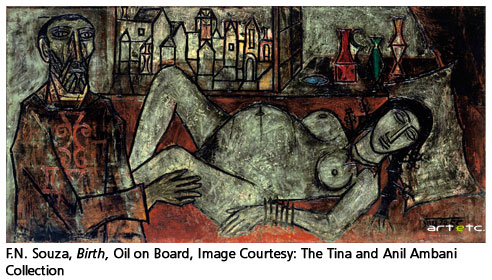- Publisher's Note
- Editorial
- What's Behind This Orange Facade!
- “First you are drawn in by something akin to beauty and then you feel the despair, the cruelty.”
- Art as an Effective Tool against Socio-Political Injustice
- Outlining the Language of Dissent
- Modern Protest Art
- Painting as Social Protest by Indian artists of 1960-s
- Awakening, Resistance and Inversion: Art for Change
- Dadaism
- Peredvizhniki
- A Protected Secret of Contemporary World Art: Japanese Protest Art of 1950s to Early 1970s
- Protest Art from the MENA Countries
- Writing as Transgression: Two Decades of Graffiti in New York Subways
- Goya: An Act of Faith
- Transgressions and Revelations: Frida Kahlo
- The Art of Resistance: The Works of Jane Alexander
- Larissa Sansour: Born to protest?!
- ‘Banksy’: Stencilised Protests
- Journey to the Heart of Islam
- Seven Indian Painters At the Peabody Essex Museum
- Art Chennai 2012 - A Curtain Raiser
- Art Dubai Launches Sixth Edition
- "Torture is Not Art, Nor is Culture" AnimaNaturalis
- The ŠKODA Prize for Indian Contemporary Art 2011
- A(f)Fair of Art: Hope and Despair
- Cross Cultural Encounters
- Style Redefined-The Mercedes-Benz Museum
- Soviet Posters: From the October Revolution to the Second World War
- Masterworks: Jewels of the Collection at the Rubin Museum of Art
- The Mysterious Antonio Stellatelli and His Collections
- Random Strokes
- A ‘Rare’fied Sense of Being Top-Heavy
- The Red-Tape Noose Around India's Art Market
- What Happened and What's Forthcoming
- Art Events Kolkata, January – February 2012
- Mumbai Art Sighting
- Art Bengaluru
- Delhi Dias
- Musings from Chennai
- Preview, February, 2012 – March, 2012
- In the News-February 2012
- Cover
ART news & views
Seven Indian Painters At the Peabody Essex Museum
Issue No: 26 Month: 3 Year: 2012
Salem, Massachusetts. Painting the Modern in India is being exhibited at The Peabody Essex Museum in the Contemporary Native American Art, Wheatland Gallery. The show which started on April 10, 2010 and continues till June 1, 2012 features seven renowned Indian painters who came of age during the height of the movement to free India from British rule. These seven featuring artists are Francis Newton Souza (1924-2002), Maqbool Fida Husain (b. 1915- 2011), Paritosh Sen (1918 - 2008), Sayed Haider Raza (b. 1922), Tyeb Mehta (1925 - 2009), Ram Kumar (b. 1924) and Bal Chhabda (b. 1923). To liberate themselves from a position at the margins of an art world shaped by the colonial establishment, these artists organized path-breaking associations - the Calcutta Artists Group in 1943, the Progressive Artists Group in 1947 Bombay, and the Delhi Shilpi Chakra in 1949. They pioneered new approaches to painting, repositioning their own art practices internationally and in relation to the 5,000-year history of art in India.

These artists created hybrid styles that are an under-appreciated yet essential component of the broad sweep of art in the 20th century. After independence in 1947, they took advantage of new opportunities in art centers around the world, especially Paris, London and New York, intensifying their quests for what the Bombay Progressives termed "aesthetic order, plastic coordination and colour composition." At the same time, they looked deeply into their own artistic heritage, learning from the first exhibition of Indian art in 1948 at Raj Bhavan in Delhi and taking inspiration from ancient sites like the old city in Benaras and the temples at Khajuraho. The show will feature artists like Francis Newton Souza, Paritosh Sen and others.

The works on view are drawn from the Peabody Essex Museum's Chester and Davida Herwitz Collection and the Harmony Art Foundation (The Tina and Anil Ambani Collection). The Harmony Art Foundation helmed by Tina Ambani lent three works by masters of contemporary Indian art which included Anish Kapoor's Halo, 2006 which is a shallow circular cone of stainless steel, 10 feet in diameter. Its surface is pleated in a radial pattern, a manipulation more commonly associated with pliable fabric than unyielding steel. The Ambanis also lent Birth by Francis Newton Souza and Ahmedabad Scene by Paritosh Sen.